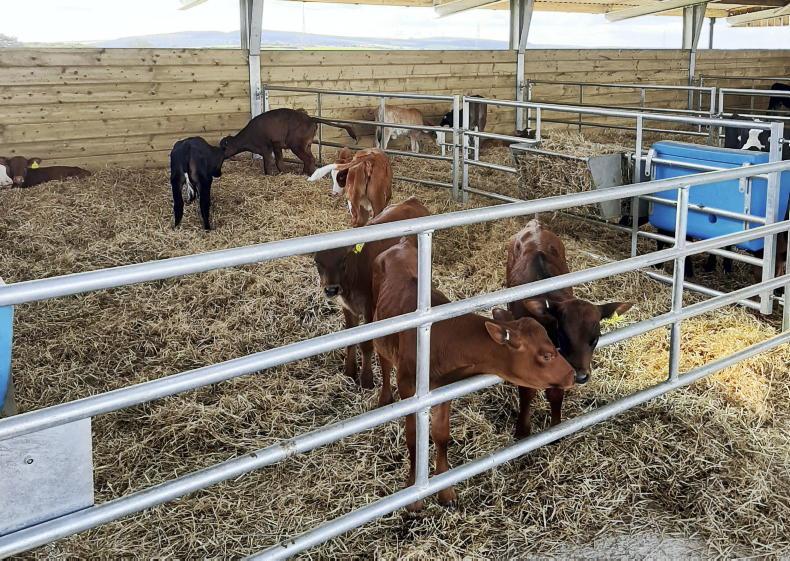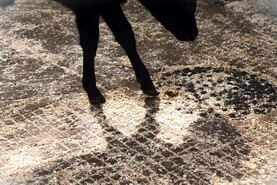This emerged during a discussion on CalfChat, a platform hosted on Twitter and Facebook by Bonanza Calf Nutrition that provides calf rearers and like-minded individuals with an opportunity to discuss calf rearing topics.
The discussion followed a finding reported at the Animal Health Ireland/Teagasc CalfCare events in spring 2020 that only 20% of farmers feed calves using an automatic feeding system.
However what also emerged is that this system is growing in popularity with many farmers considering investing in it.
But having the right information is key before embarking on any system.
During the CalfChat discussion it became apparent that there is a change in attitude towards the role automatic feeders play in calf rearing.
When automatic feeders first became popular in Ireland and the UK, they were sold as a system that would remove the job of rearing from the farmer.
As a result, farmers mistakenly believed that once the calf was on the feeder, they could forget about the animal.
In a poll led by CalfChat, respondents said that the biggest saving was in time, when compared to twice a day feeding
But one interesting theme to emerge from the CalfChat discussion is that the machine does not rear the calves for you.
Dr Christine Cummins from Bonanza Calf Nutrition says it is enlightening to know that farmers are recognising that machines can’t do all the work as this is indeed the reality.
In a poll led by CalfChat, respondents said that the biggest saving was in time, when compared to twice a day feeding.
However, there was much discussion around the adjustment to the feeding system and how time was spent.
For instance, training calves to drink takes longer with an automatic system.
The experience of a block calver would therefore be very different to a farmer with a year-round calving herd.
And neither must the risk of disease be overlooked.
If there are large groups of calves in a single pen sharing a station, risk of disease will be much higher than a smaller group of calves on a multi-teat feeder.
Participants on the CalfChat discussion believed that it is not necessarily the system, but the management of the system, that is important.
The big question emerging is which is better, automatic feeding or manual feeding? Like with most calf related questions there is no simple answer
If a person has issues with calves on a manual feeding system with no apparent reason, the rearer should take a step back and seek advice on the possible cause.
Purchasing a feeder will not necessarily fix this problem, says Dr Cummins.
“The big question emerging is which is better, automatic feeding or manual feeding? Like with most calf related questions there is no simple answer,’’ Dr Cummins admits.
“This is where a discussion like those hosted by CalfChat can be helpful. It is always good to talk to your calf advisor or vet to clarify points that come up in these discussions.’’
The CalfChat debate about manual v automatic feeding systems showed that opinions have changed with farmers now realising that it is not just time saving that is important, it is how the time is used.
On automatic feeding systems the calves do the talking and, if you don’t listen to them yourself, your feeder won’t hear everything they are saying
“Although time is saved, it doesn’t mean you don’t spend time on the other jobs such as bedding, cleaning the feeder and water drinkers and offering dry feed,’’ says Dr Cummins.
Her consistent perspective is that each system is different and comes with its own set of pros and cons.
“On automatic feeding systems the calves do the talking and, if you don’t listen to them yourself, your feeder won’t hear everything they are saying.
“This is true regardless of what labour system we are aiming for; calves still require manual attention. If we remember this, it is possible to be successful in any system.’’
With manual feeding, there is also the comparison between once and twice daily feeding.
Teagasc trialled this and concluded that, compared to feeding calves milk twice a day, feeding calves once a day reduced the time spent feeding by a third.
It has also been reported that feeding once a day can reduce calf rearing labour significantly so that a farmer rearing 80 calves on this system can save 100 hours over the rearing period.
It is a simple system with very little investment and highlights that it is not only worth considering manual vs automatic feeding but the way in which these systems operate.
For the majority of farmers, time saved in calf rearing is the biggest incentive for automatic feeders.
It is safe to say the debate will continue as no one system is suitable for every farm
The reduction in labour when compared to feeding calves twice daily is much the same when it comes to once daily feeding and automatic machines. The difference is in the type of labour.
A study conducted by Teagasc, Moorepark, in 2019 observed a big difference in type of labour.
This was confirmed on the CalfChat discussion when participants commented that training calves takes longer on automatic feeders, but that physical labour and flexibility can be an advantage compared to manual feeding systems.
“It is safe to say the debate will continue as no one system is suitable for every farm, but being aware of the differences between the systems is key to their success,’’ says Dr Cummins.
The next CalfChat session will be held tomorrow, Thursday 15 October, at 8pm on the @CalfChat Twitter page with guest host Tom Kenny, inventor of the Calf Barrow (www.calfbarrow.ie). The topic will be labour efficiency at calving.






 This is a subscriber-only article
This is a subscriber-only article





